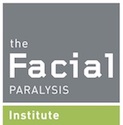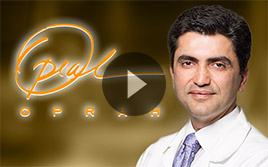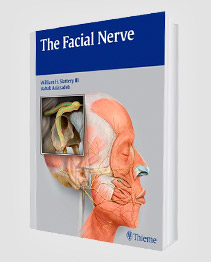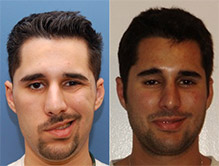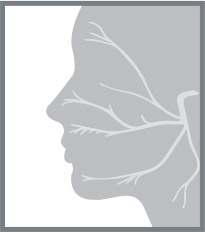Facial paralysis may affect the taste buds, sensory organs found around the tongue that let people experience sweet, savory and other flavors. To understand the link between facial paralysis and taste, let’s examine the results of a recent study on the topic.
In a study published in the Journal of Audiology & Otology in April 2017, researchers examined taste thresholds in Bell’s palsy patients and healthy individuals. Researchers organized the Bell’s palsy patients into groups based on age and the severity of their symptoms. Additionally, researchers evaluated all study participants’ taste thresholds via electrogustometry (EGM), testing used to measure taste via the passage of a current through the tongue, and chemical taste assessments.
The study indicated that the severity of a Bell’s palsy patient’s symptoms had no effect on his or her taste thresholds. Meanwhile, in older study participants, there were no notable differences in the taste thresholds of Bell’s palsy patients and healthy individuals. Conversely, in younger study participants, the electrical taste thresholds on EGM were higher in Bell’s palsy patients than healthy individuals.
Additional research is required to understand the correlation between facial paralysis and taste. However, some studies have highlighted the impact of facial paralysis on a person’s ability to eat and drink.
For example, a Brazilian Journal of Otorhinolaryngology study was used to assess the mandibular range of individuals dealing with peripheral facial paralysis. In the study, two groups were evaluated: a group of 28 individuals diagnosed with idiopathic facial paralysis, and a group of 28 healthy individuals. Researchers used a digital caliper to measure several aspects of study participants’ mandibular range of motion, including their maximum oral opening, protrusion and lateralization to the left.
The study revealed that there were “statistically significant differences” in terms of both groups’ observed maximum oral opening, protrusion and lateralization to the left, researchers said. It indicated that idiopathic facial paralysis patients dealt with “a significant reduction of mandibular range of motion” in comparison to healthy individuals, researchers noted. The study also showed that evaluation of the temporomandibular joint may be required to determine the severity of an individual’s facial paralysis symptoms.
In addition to the aforementioned study, a Dysphagia study illustrated the impact of unilateral peripheral facial paralysis on a person’s ability to eat and drink. In the study of 17 patients diagnosed with unilateral peripheral facial paralysis, researchers provided each participant with a questionnaire regarding any problems they dealt with related to his or her facial paralysis. Researchers also examined study participants to assess the severity of their facial paralysis.
With the Dysphagia study, researchers found that the Sunnybrook Facial Grading System, a measurement tool commonly used to analyze facial movement, does not account for eating or drinking problems that a facial paralysis patient may experience. Furthermore, researchers noted that facial paralysis patients experience a wide range of problems, and their ability to adapt to these issues varies. Researchers also indicated that working with a speech therapist to address functional issues related to facial paralysis sometimes provides a helpful adjunct to traditional therapy options.
What Is the Best Way to Treat Facial Paralysis?
For people who are dealing with facial paralysis, prompt diagnosis and treatment is key. A British Journal of General Practice study revealed that effective facial paralysis management is often predicated on clinical assessment and diagnosis. First, a doctor must carefully examine a patient and his or her facial paralysis symptoms. The doctor next must perform an ear, nose and throat (ENT) examination and other testing to determine the severity of his or her patient’s facial paralysis. At this time, the House-Brackmann scale may be used to grade the patient’s facial paralysis symptoms as well.
Originally developed in 1985 by Los Angeles otolaryngologists Dr. John W. House and Dr. Derald E. Brackmann, the House-Brackmann scale helps a doctor define the severity of facial paralysis. It is scored in terms of grades that range from I to VI. A grade I score is given to an individual who experiences no facial paralysis symptoms. Comparatively, a grade VI score is given to an individual who has no facial motion.
Once a doctor assesses his or her facial paralysis patient, a personalized treatment plan is developed. The plan may include various facial paralysis treatments, including surgery, neuromuscular retraining or Botox.
If surgery is recommended for a facial paralysis patient, he or she may undergo a selective neurolysis procedure. Selective neurolysis is a groundbreaking smile reanimation procedure developed by globally recognized facial plastic and reconstructive surgeon Dr. Babak Azizzadeh. During selective neurolysis, a facial paralysis patient’s facial nerves are mapped out via intraoperative electromyography (EMG). Then, the activity of these nerves is selectively decreased; nerve activity is reduced based on the nerves’ impact on a facial paralysis patient’s ability to smile. Finally, a facial paralysis patient’s platysma muscle is released, and this results in spontaneous reanimation of the face and a natural-looking smile.
Neuromuscular retraining involves the use of specific exercises to improve the facial function. Facial paralysis patients sometimes lose the ability to make coordinated facial muscle movements, and neuromuscular retraining helps these patients regain the ability to move the facial muscles properly. A neuromuscular retraining program is customized to a facial paralysis patient. Initially, a neuromuscular retraining exercise regimen is developed by a neuromuscular therapist, who then teaches a facial paralysis patient how to perform different exercises. After a facial paralysis patient proves that he or she can successfully perform these exercises, this individual can conduct the exercises regularly to enhance facial muscle coordination.
Botox often provides an effective treatment for individuals dealing with Bell’s palsy, partial facial paralysis or synkinesis. It reduces tension in the face and prevents unwanted facial muscle movements. In doing so, Botox helps treat asymmetric facial muscle movement, resulting in a harmonious facial appearance. Botox may even be used in combination with neuromuscular retraining to help a facial paralysis patient maximize his or her treatment results.
Schedule a Facial Paralysis Treatment Consultation with Dr. Azizzadeh
Facial paralysis symptoms sometimes linger, and over time, may make it difficult for people to chew, eat and drink. They may also affect a person’s ability to smile, frown and make other facial expressions. If facial paralysis symptoms go untreated, they increase a person’s risk of experiencing long-term facial paralysis, too.
At The Facial Paralysis Institute, Dr. Azizzadeh offers comprehensive facial paralysis treatments, and each treatment is tailored to a patient to help reduce his or her facial paralysis symptoms. To learn more about Dr. Azizzadeh’s approach to facial paralysis treatment or to schedule a consultation, please contact us online or call us today at (310) 657-2203.
Request your consultation with Dr. Azizzadeh today
Call us at (310) 657-2203 to schedule an appointment.
Schedule a Consultation